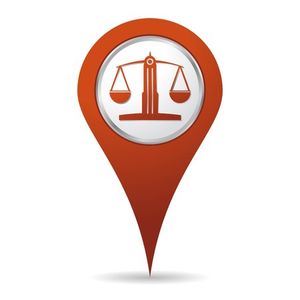By Dr. Ken Broda Bahm:
All decisions take place in a context. Change the context, and you’re often able to change the decision. Sometimes, that context is situational, like the current political campaign which is increasingly, and disturbingly, spilling over into violence. And sometimes, that context is physical, like the actual polling location where folks will eventually go to vote. A recent article by Ben Pryor in Scientific American reports on a number of studies showing that poling location can influence decisions. That influence occurs through a process known as priming, which Ben Pryor defines as “a subconscious form of memory, based on identification of ideas and objects.” In a particular location — like a school, a church, or a courthouse — some social messages will be more salient than others. When those cues become activated, that triggers specific associations from memory.
For example, Ben Pryor reports on studies showing that, even after controlling for other factors like race, age, sex, and party identification, polling places have a measurable influence on the election results. For example, voting in a Christian church activates the Christian identities of many voters, making them more likely to back policies and candidates who seem to be aligned with those values. Similarly, voting in schools tends to make voters more likely to vote for measures that are supportive of public education. “Taken as a whole,” he concludes, “the empirical evidence has found that a seemingly irrelevant thing — a polling location — can influence a voter’s decision on a political candidate, political party and ballot issues.” That is no surprise, at least not if you come from the “Everything matters” school of human communication that I do. But it is a reminder to consider the physical setting. In a courtroom, the physical setting carries a lot of meaning, and it is designed to. In mock trials as well, the research site is also likely to carry some meaning. I don’t believe that location effects have been specifically researched in either trial or mock trial settings, but for this post, I will share some informed speculation on what those effects might be.
How a Courthouse Might Prime
Picture the interior of one of those grand old fashioned courthouses. What does it say to you? The high ceiling, the ornamentation, the raised bench, the flag — all of it inspires a hushed atmosphere along with the message that, “This is a ceremony, an important ceremony, and one that is bound up with the nation’s history and highest ideals.” It is like being in a church, albeit a civil and secular one. That setting is likely to elevate the salience of the oath for jurors and witnesses, and to remind everyone that the work being done here is solemn and important. It would be interesting to see how a modern courthouse might send a different priming message, for example saying, “This is administrative…this is about efficiency.” But it is likely that all or nearly all courtrooms are going to be designed to call to mind all of the the salient cues that orient participants toward the law and invite jurors to assume a temporary identity emphasizing fairness and adherence to the law. That means there is likely less reason to expect complete honesty in voir dire (knowing that potential jurors will be motivated to present their best versions of themselves), but there is also some reason to believe that, once selected, they truly will try to set aside their attitudes and biases and base their evaluations on the facts and the law.
How a Mock Trial Location Might Prime
By necessity, we have conducted mock trials in both schools and churches. I recall one small town in Oklahoma where we were forced to use a church community center for our research. The rooms were each decked out in posters featuring lessons from the Bible, and sure enough, the jurors emphasized ethics in evaluating that case. Frequently, consultants will use one of those focus group facilities — the ones with the small interview rooms, the obvious observation rooms, and the one-way mirror connecting the two. My suspicion is that a room like that signals “marketing, sales, and testing.” Accordingly, the location may put the jurors in the frame of thinking, “Does this sell?” instead of “Is this true?” When we run focus group research, we will generally pick a set of hotel conference rooms. Our view is that this location is more neutral. But it still doesn’t carry nearly the same atmosphere as a courtroom. When available, it makes sense to put an American flag, state flag, or both at the front of the room just to provide a cue reminding participants at least a little of the courtroom atmosphere.
Whether in a trial of a mock trial, the experience for most jurors and mock jurors is likely to be a novel one. They won’t just “set aside” their attitudes and beliefs, but at the same time, you won’t usually hear the same views that you would hear in their living room, or see on their social media page. So it pays to consider the context, including the location.
______
Other Posts on Priming:
- Prime Your Jury for Moral Judgment
- Play It Where It Lies: Throughout Trial, Match the Message to the Mindset
- Avoid Market Research Mistakes in Your Mock Trial
______
Pryor, B. (2016). How Different Polling Locations Subconsciously Influence Voters. Scientific American, Feb. 29.
Image credit: 123rf.com, used under license
